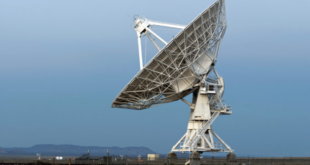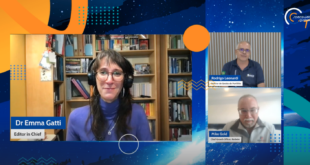by Christophe Bosquillon

For SpaceWatchers, it doesn’t come as a surprise that Thailand has manifested several of its space ambitions. SWGL has covered the last decade of the country’s space developments at the government and private sector levels. So, when in early April 2024, Thailand became the latest country to join the China-led International Lunar Research Station (ILRS) program, SWGL assessed it as a significant development in the context of Thailand’s space ambitions. But that needs to be put in perspective. What are the short and long term implications? Let’s find out.
Thailand does have a space agency
Thailand’s entry into the space domain stems from concerns for Earth environmental observation, communications, and national security. The country’s leadership has long understood the growing importance of the space domain as vital to its needs. This is why in 2000 it established the Geo-Informatics and Space Technology Development Agency (GISTDA), responsible for providing Earth observation data-oriented “geo-informatics” services.
Alongside the research that GISTDA conducts in that field, the Thai government added another component in 2004 with the creation of the National Astronomical Research Institute of Thailand.
Then in 2018, Planet agreed to provide its imagery and analysis to GISTDA. Access to Planet Basemaps over the country, on a quarterly basis, provide the Thai government with up-to-date and cloud-free imagery that can be used by various ministries such as agriculture, rural development, and water.
Thailand does have a space development masterplan
UNOOSA played a seminal role in the emergence of a precursor to a Thai space program, which is more like a space development masterplan. That aspect should be known better and serve as an example for other Emerging Space Countries. In the mid-2010s, Thailand published under UNOOSA sponsorship its first 2017-2036 multi-decadal plan for space development, the original “Thailand National Space Master Plan & Space Law.” The plan was subsequently restructured for operationalisation: in December 2022, the Thai government approved a new “National Space Master Plan 2023-2037.” Furthermore, a year ago, the Thai government’s Office of National Digital Economy and Society Commission (ONDE), started to develop an implementation process for the “National Space Master Plan 2023-2037” with the ambition of making Thailand an active participant in the global space economy.
Plans for a spaceport
While the above national space master plan prioritizes the drafting of the Thai national communication satellite policy, the country’s proximity to the equator makes it an attractive location to build a spaceport and generate the economic development benefits that it could bring to the country. GISTDA started a feasibility study in 2022 and expects to have it completed by 2025 with the help of South Korea. More on that below.
The Thai Space Consortium’s first military successes
TSC, the Thai Space Consortium, created in the late 2010s but substantially delayed by the Covid-19 pandemic, eventually managed to successfully launch two Earth observation satellites for the Thai Air Force called Napa-1 and Napa-2. Napa-1 was launched from French Guyana in September 2020, on an Arianespace Vega rocket and Napa-2 was launched from Cape Canaveral Space Force Station in Florida in July 2021, on a SpaceX Falcon 9 launcher.
As reported by The Diplomat in January 2023, TSC has had rather ambitious plans for the launch of five small satellites to be produced in Thailand during 2023-2027. There is even a cislunar project with TSC-2, a satellite that would aim for Moon orbit in 2027. But despite the general public’s interest in space, there has been some political pushback due to development costs at the billion Thai Baht level, which is several dozen million USD per satellite.
mu Space, a major Thai space actor
SWGL has long reported on mu Space, a major Thai space actor, and more details on information summarized below can be found here.
In 2019, Mu Space announced it had signed multiple satellite service deals with seven companies from Asia-Pacific. The company also tapped Relativity Space for future launches.
It is quite bizarre that the Artemis Accords haven’t so far paid sufficient attention to ASEAN significant Emerging Space Countries.
In March 2023, mu Space reached an exclusive deal with OneWeb to provide Low Earth Orbit (LEO) connectivity solutions across mainland Southeast Asia including Thailand, Laos, Cambodia, Vietnam, Myanmar, and Malaysia. In November 2023, the company took the lead in creating a space supply chain for the region, the goal being to launch Southeast Asia into a global competitor in the aerospace industry.
In February 2024, mu Space and ispace of Japan signed two memorandums of understanding related to payload services and strategic cooperation, the collaboration marking the first step towards future lunar missions between the two companies. The same month, the company partnered with Airbus on Thailand smallsat missions.
Latest space cooperation between Thailand and the West
In January 2023, NASA and Thailand mapped out future pathways for collaboration in discussions including satellites, climate operations, and natural disaster alerts.
And in October 2023, Thailand launched THEOS-2, its second Earth observation satellite, into orbit from Europe’s spaceport in the French Guyana space center.
Thailand’s space partnerships with South Korea and Japan
Thailand has started to develop active partnerships with South Korea in space, primarily through the Korea Aerospace Research Institute (KARI).
South Korea was an early participant in the development of the above mentioned THEOS-2 Earth observation satellite, and has maintained a continuous collaboration with Thailand through activities such as the Asia-Pacific Regional Space Agency Forum (APRSAF) and the International Astronautical Congress (IAC).
During the 73rd International Astronautical Congress in September 2022, the Ministry of Science and ICT and the Thai government held a meeting to discuss cooperation on the feasibility study for the construction of a Thai spaceport. In November 2022, Minister Lee Jong-ho had a bilateral meeting with Minister Anek Laothamatas of the Thai Ministry of Higher Education, Science, Research and Innovation, to discuss the status of space development and cooperation between the two countries. Minister Anek explained Thailand’s plans to establish a spaceport and requested Korea’s support for the feasibility study. In February 2023, the parties announced that KARI and GISTDA signed an Implementation Arrangement (IA) for the feasibility study of constructing a spaceport in Thailand to serve as a platform for regional space cooperation. The feasibility study focuses on six major fields including site selection, business model development, construction costs, launch permits and safety regulations, and operation of the launch site and facilities. After the feasibility study, it is expected that there will be opportunities for Korean space companies to expand their overseas operations.
JAXA of Japan has long been involved in ASEAN space development initiatives through the Asia-Pacific Regional Space Agency Forum (APRSAF). SPACETIDE Foundation of Japan remains instrumental in arranging regional cooperations that involve Thailand GITSDA and its private space sector.
Thailand, China, and the Moon
Thailand has had space cooperation talks with China throughout the past decade. Back in 2018, talks of international trade and direct foreign investment in the framework of Thailand’s Eastern Economic Corridor (EEC) and the Chinese-led Belt and Road Initiative (BRI) did cover space cooperation. These include satellite manufacturing and applications, but it was hard to see anything concrete coming out of it.
Therefore it is upon a rather slim track record of Thailand-China cooperation in the space domain that China decided to include Thailand’s space weather monitor as a payload aboard the 2023s Chang’e-7 launch of the Chinese lunar mission. Next, in April 2024, Thailand became the 9th and latest country to join the International Lunar Research Station (ILRS) program.
The country’s leadership has long understood the growing importance of the space domain.
The agreement between Thailand and China is two-fold. First, space development: the countries will establish a joint committee and a joint working group to plan and implement joint space projects, scientific exchange projects and personnel training plans, exchange data and information, and organize joint symposiums and scientific workshops to strengthen cooperation. Second, the ILRS proper: the two parties will focus on the demonstration, project implementation, operation and application of the ILRS, organize expert teams to conduct research from the three aspects of science, engineering and international cooperation, and form a cooperation plan.
What kind of club does Thailand join as its 9th member? Let’s recall that China formally announced the ILRS project in St. Petersburg, in June 2021, with Russia as co-founder. Venezuela, Pakistan, Azerbaijan, Belarus, South Africa and Egypt eventually joined afterward. While the US-led Artemis Accords are nearing 40 members (with Switzerland being the 37th country to join lately), China appears to be experiencing some difficulties in compelling countries to join its ILRS project.
Marc Julienne, director of the Center for Asian Studies at the French Institute of International Relations (IFRI), is quoted mentioning that “China’s space cooperation is focusing on the “Global South,” because of a lack of better alternatives and broader diplomatic reasons.” While we find Julienne’s assessment to be spot on, we should be mindful of its implications.
First, while China and Russia lead the BRICS, India assumes increasing space domain leadership in the Indo-Pacific and globally. PM Modi even suggested that the expanding BRICS+ should set up their own space organization.
Second, if the West doesn’t court more compellingly countries from the loosely defined “Global South” to join the Artemis Accords, then “you reap what you sow.” Considering the rather robust track record of Thailand as a genuinely Emerging Space Country, its space cooperation efforts currently underway with South Korea and Japan, and its own Moon ambitions, it is a bit surprising that the country hasn’t been already co-opted to join the Artemis Accords.
Since the Artemis Accords do not intend to exclude countries that would already participate in the ILRS, it would be possible for Thailand to become the first country to join both organisations. This remains to be seen though.
In the ASEAN regional arrangement, Singapore is the only country (an island state) to have joined the Artemis Accords so far. Besides, Thailand has two neighbours that are active in space, Indonesia and Vietnam, both having regional cooperations underway with Japan. It might become complicated for Vietnam and Indonesia to join a China-driven arrangement such as ILRS, considering the geopolitical and diplomatic pros and cons. On the other hand, it is quite bizarre that the Artemis Accords, while hosting the Indo-Pacific region’s dominant space powers, haven’t so far paid sufficient attention to ASEAN significant Emerging Space Countries other than Singapore.
Japan and South Korea are playing a key role as strategic “offshore balancers” with ASEAN countries, which means that they’re doing the diplomatic, policy, market, and industry development work that the West isn’t doing. The West launching an ASEAN country satellite once in a while isn’t sufficient. The US and Europe need to do much more, lest ASEAN (and Global South) countries’ space development frameworks-in-progress could be gradually captured by China using the ILRS as a prestigious bait.
Bangkok having re-joined Beijing should trigger assertive reactions from Washington DC to Berlin, Milan, and Paris. Whether that actually happens remains to be seen.

Christophe Bosquillon has a diverse professional background, having operated globally with a focus on the Indo-Pacific region. His experiences in Japan, the Koreas, Taiwan, China, ASEAN, India, Russia, and Australia have given him a deep understanding of the multipolar realpolitik of our world under the Pax Americana. With a background in engineering, trade, and foreign direct investment in industries relevant to Space Resource Utilization (SRU), such as mining, transportation, energy, manufacturing, agrifood, environment, and digitalization, Chris is committed to developing SRU value chains that benefit the Earth. As an executive, owner, writer, and founder of Autonomous Space Futures Ltd, Chris has extensive experience in collaborative policy crafting and works to develop space business and governance models relevant to society. He is a member of NGOs that provide input to the United Nations Committee on the Peaceful Uses of Outer Space (UNCOPUOS) legal subcommittee Working Group on Space Resources. Chris contributes to regulatory clarity on appropriation, priority, sustainability, and sharing in a way that balances national interests with civil society inclusion, provided a transparent due process is followed. When advocating for access to technology and space for the Global South, Chris believes that emerging space powers’ participation in space markets must be commensurate with their interest and involvement in international space politics. He believes that their ability to develop sovereign domestic capabilities with spillover potential is also essential. Chris is keen on ‘Peace Through Strength’ diplomacy and deterrence-based security as enablers of secure space access. He supports sovereign cislunar space situational awareness as mandatory for freedom of circulation in the space domain and deconflicted cooperation on the Moon.





